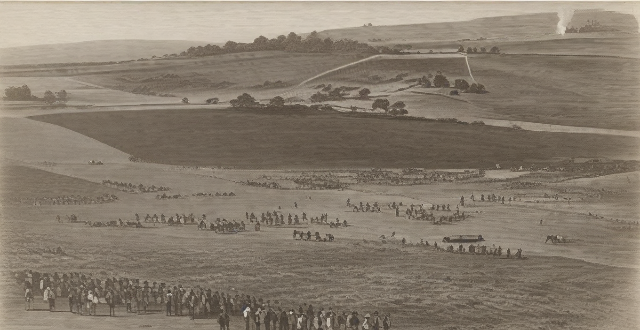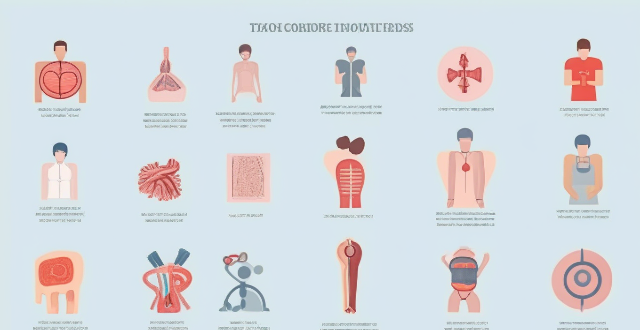Stretch Dynamic

How long should I hold each stretch after a workout ?
Stretching after a workout is crucial for reducing muscle soreness, improving flexibility, and preventing injuries. The recommended duration for each stretch varies depending on the type of stretching: - Static stretching: Hold each stretch for 15-30 seconds and repeat 2-4 times. - Dynamic stretching: Perform 8-12 repetitions per stretch and 1-2 sets. To make the most out of your post-workout stretching routine, focus on breathing, avoid bouncing, listen to your body, and be consistent.

Is it better to stretch before or after a workout ?
Stretching is an essential component of any exercise routine. It helps to improve flexibility, reduce the risk of injury, and enhance overall performance. However, there has been a long-standing debate about whether it is better to stretch before or after a workout. In this article, we will explore both sides of the argument and provide our recommendations based on current research. Stretching Before a Workout: Advantages include warm-up for muscles and potential injury prevention. Disadvantages may include reduced strength and overstretching. Stretching After a Workout: Advantages include improved flexibility and aiding in recovery. Disadvantages may include delayed onset muscle soreness (DOMS). Recommendations: Based on current research, both pre- and post-workout stretching have their benefits and drawbacks. Perform dynamic stretches before exercise to warm up your muscles without compromising strength or power output. Incorporate static stretches after your workout to improve flexibility and aid in recovery. Make stretching a regular part of your exercise routine for consistent improvements in flexibility and overall performance.

Is it necessary to stretch every muscle group after a workout ?
Stretching after a workout is often considered an essential part of any exercise routine. It helps in improving flexibility, reducing muscle soreness, and preventing injuries. However, the question remains: is it necessary to stretch every muscle group after a workout? Let's delve into this topic and explore the benefits and considerations associated with post-workout stretching.### Importance of Post-Workout Stretching Improved Flexibility Stretching after a workout can help maintain and improve flexibility over time. When muscles are warmed up from the exercise, they become more pliable, making it easier to stretch them. Regular stretching can lead to increased range of motion and better overall flexibility. Reduced Muscle Soreness Stretching can help reduce muscle soreness that may occur after a strenuous workout. By elongating the muscles, stretching promotes blood flow, which aids in the removal of lactic acid and other waste products that contribute to muscle soreness. Injury Prevention Stretching can also play a role in injury prevention. By increasing flexibility and range of motion, stretching can help reduce the risk of strains, sprains, and other injuries that may occur during physical activity.### Considerations for Post-Workout Stretching Not All Muscles Need to Be Stretched While stretching is generally beneficial, it's not necessary to stretch every muscle group after every workout. The focus should be on the muscles that were primarily engaged during the exercise session. For example, if you completed a lower body workout, it would be more beneficial to stretch your legs rather than your arms. Quality Over Quantity It's important to prioritize the quality of your stretches over the quantity. Performing a few well-executed stretches is more effective than rushing through multiple stretches without proper form or technique. Take the time to hold each stretch for at least 15-30 seconds, ensuring that you feel a gentle stretch without any pain or discomfort. Listen to Your Body Your body will provide clues about which muscles need stretching. If you experience tightness or stiffness in a particular muscle group, it's a good idea to focus on stretching those areas. Conversely, if a muscle group feels loose and relaxed, there may be no need to stretch it extensively.### Conclusion In conclusion, while stretching every muscle group after a workout is not strictly necessary, incorporating stretching into your post-workout routine can offer numerous benefits. By focusing on the muscles that were heavily engaged during your exercise session and prioritizing quality over quantity, you can improve flexibility, reduce muscle soreness, and potentially prevent injuries. Remember to listen to your body and adjust your stretching routine accordingly for optimal results.

Is it true that stretching before workout prevents injuries ?
Stretching before a workout is a common practice, but does it prevent injuries? Recent studies suggest that static stretching may actually decrease performance and increase the risk of injury. Dynamic stretching, on the other hand, appears to be more effective at reducing the risk of injury. Incorporating dynamic stretching and light aerobic activity into your warm-up routine can help prepare your body for exercise and reduce the risk of injury.

How can I incorporate stretching into my gym routine ?
Stretching is essential for any fitness routine. It improves flexibility, reduces injury risk, and enhances performance. Here are tips on incorporating stretching into your gym routine: dynamic stretches before workouts, foam rolling, active isolation stretches during workouts, resistance band stretches, static stretches after workouts, yoga or Pilates, and cooldown stretches. Incorporating stretching into your routine will help you reap the benefits of a well-rounded fitness regimen.

Are there different warm-up routines for various types of sports ?
Warm-up routines vary by sport to prepare the body for activity and prevent injury. Examples include dynamic stretches, light exercises, and specific drills tailored to each sport's physical demands.

Are there any specific stretches or warm-up routines that aid in sports recovery ?
Recovery is an essential aspect of sports and physical activities. Stretching and warm-up routines can aid in reducing the risk of injuries, improving performance, and enhancing overall well-being. Specific stretches such as hamstring, calf, and quadriceps stretches can increase flexibility, reduce muscle tension, and promote blood flow. Warm-up routines like cardiovascular exercises, resistance band exercises, and foam rolling can activate muscles, improve circulation, and reduce tightness. Incorporating these routines into your recovery process can help you achieve better results and prevent injuries.

What are some dynamic warm-up exercises that can be done before running ?
Dynamic warm-up exercises are essential for runners to improve performance and reduce injury risk. These include high knees, butt kicks, leg swings (front and side), walking lunges, toy soldiers, ankle circles, side shuffles, plank to runner's lunge, jumping jacks, and light jogging. Each exercise targets specific muscles and joints, enhancing mobility, flexibility, and circulation. Completing these warm-ups prepares the body for running, ensuring better efficiency and comfort during the activity.

What are some good stretching exercises for after a run ?
After a run, it's important to stretch your muscles to prevent injury and improve flexibility. Here are some good stretching exercises for after a run: - Hamstring Stretch: Sit on the ground with your legs straight out in front of you, reach forward and try to touch your toes without bending your knees, hold for 15-30 seconds and repeat 2-3 times. - Quadriceps Stretch: Stand upright and bend one knee, bringing your heel towards your buttocks, grasp your ankle with one hand and hold onto a stable object with the other hand for balance, pull your foot closer to your buttocks until you feel a stretch in the front of your thigh, hold for 15-30 seconds and repeat 2-3 times on each leg. - Calf Stretch: Stand facing a wall with your hands placed against it at shoulder height, step one foot back behind you, keeping both heels flat on the ground, bend your front knee slightly while keeping your back leg straight, hold for 15-30 seconds and repeat 2-3 times on each leg. - Gluteal Stretch: Sit on the ground with your legs bent and feet flat on the floor, place your right ankle over your left knee, creating a "figure four" shape with your legs, gently push down on your right knee until you feel a stretch in your glutes, hold for 15-30 seconds and repeat 2-3 times on each side.

Are there any specific exercises or stretches that can help improve my golf game ?
Golf improvement through specific exercises and stretches, including core strengthening exercises like plank and Russian twists, flexibility and mobility stretches such as hamstring and hip flexor stretches, and putting practice drills like the line and gate drills to enhance precision and control.

What are the best stretches for cooling down after a gym session ?
After a gym session, it's crucial to gradually cool down your body. Here are the best stretches for that: hamstring, quadriceps, calf, hip flexor, and back stretches. These exercises help reduce heart rate, lower blood pressure, prevent muscle soreness, improve flexibility, and range of motion. Remember to hold each stretch for at least 30 seconds and avoid bouncing to prevent injury.

How can I incorporate stretching into my daily office routine ?
Incorporating stretching into a daily office routine is crucial for maintaining good posture, preventing muscle stiffness, and reducing the risk of work-related injuries. Here are some tips to help you add stretching to your daily routine: Start with a warm-up: Begin your day with simple warm-up exercises like shoulder shrugs, arm circles, and neck rolls. Take breaks to stretch: Set an alarm or use a timer app to remind yourself to take short breaks throughout the day to stretch your wrists, back, and legs. Use your lunch break wisely: Take advantage of your lunch break to do a more comprehensive stretching session. Find a quiet space where you won't be disturbed and stretch your hamstrings, quads, and calves. End your day with cool-down stretches: Before leaving the office, take a few minutes to cool down and stretch out any tight muscles that have developed during the day. Stretch your chest, hip flexors, and shoulders. Remember to listen to your body and only stretch to the point of mild discomfort. Never force a stretch or bounce, as this can lead to injury. By incorporating these simple stretching exercises into your daily office routine, you'll improve your overall well-being and increase productivity at work.

Can stretching after a workout improve flexibility ?
Stretching after a workout can improve flexibility, reduce muscle soreness, and aid in recovery. To stretch properly, hold each stretch for at least 30 seconds, avoid bouncing, and focus on major muscle groups.

Why is it important to stretch after exercising ?
Stretching after exercising is crucial for preventing injuries, enhancing performance, and promoting recovery. It improves flexibility, reduces muscle soreness, prevents injuries, promotes recovery, enhances performance, and reduces stress. Incorporating stretching into your fitness routine will improve your overall health and make your workouts more enjoyable and effective.

How can I stretch my travel budget by using public transportation effectively ?
Stretch your travel budget by using public transportation effectively. Research options, look for discounts, plan routes ahead, be prepared with cash or card, avoid peak times, pack light, and take advantage of scenic routes.

What is the role of stretching in physical recovery and injury prevention ?
Stretching is an essential component of any physical activity routine, including sports, exercise, and daily activities. It helps to improve flexibility, range of motion, and overall mobility. In this article, we will explore the role of stretching in physical recovery and injury prevention. The benefits of stretching include improved range of motion, improved joint mobility, and improved post-exercise recovery. By increasing flexibility and range of motion, stretching can help reduce the risk of strain injuries such as hamstring pulls or calf strains. Stretching can also help to reduce the risk of overuse injuries, which are common in sports that involve repetitive movements or high levels of exertion. Additionally, stretching can help improve balance and coordination, reducing the risk of falls and other accidents. To stretch properly, it's important to warm up before exercise with some light stretching to prepare your muscles for the workout and reduce the risk of injury. After finishing your exercise, stretch again to speed up recovery time and reduce muscle soreness. You should hold each stretch for at least 30 seconds and go through all major muscle groups. When you stretch, use proper techniques to avoid putting unnecessary stress on your muscles or joints. Stretch slowly and gently, avoiding any sudden or forceful movements.

What are some easy yoga stretches for improving flexibility ?
Flexibility is an important aspect of overall health and wellness, and yoga is a great way to improve it. Here are some easy yoga stretches that can help you improve your flexibility: - Child's Pose (Balasana) helps stretch the hips, groins, and lower back. - Downward Dog (Adho Mukha Svanasana) helps stretch the arms, shoulders, chest, and hamstrings. - Pigeon Pose (Eka Pada Rajakapotasana) helps stretch the hips, groins, and lower back. - Cat-Cow Pose (Marjaryasana-Bitilasana) helps stretch the spine, neck, and shoulders. - Mountain Pose (Tadasana) helps improve balance and posture while stretching the entire body.

Is it important to stretch after an intense workout
Stretching is important for recovery, flexibility, and injury prevention.

How can I stretch my travel budget by staying in hostels or Airbnb rentals ?
Traveling can be expensive, but staying in hostels or Airbnb rentals can help save money. Here are tips on choosing the right accommodation, maximizing savings, being mindful of extra fees, and enjoying your stay.

What are some discreet exercises I can do in an open-plan office ?
In an open-plan office, it's important to maintain your health and fitness while also being considerate of your colleagues. Here are some discreet exercises you can do in such a setting: 1. Desk Chair Exercises: Seated Leg Lifts and Seated Hip Circles 2. Under Desk Exercises: Calf Raises and Ankle Rotations 3. Stretching Exercises: Shoulder Shrugs and Wrist Stretches 4. Breathing Exercises: Deep Breathing and Alternate Nostril Breathing These exercises can be done without disturbing others around you. Remember to take breaks throughout the day to move around and stretch, which will not only help improve your physical health but also increase productivity and focus.

Are there any specific yoga poses that help with back pain ?
Yoga is an effective way to alleviate back pain, and these specific poses can help. Child's Pose stretches the lower back and hips, Downward-Facing Dog strengthens the entire body including the back muscles, Cat-Cow Stretch warms up the spine and improves flexibility in the lower back, Bridge Pose strengthens the muscles surrounding the spine, and Legs-Up-the-Wall Pose promotes relaxation and reduces swelling in the legs.

Are there any specific stretches or movements that should be avoided during sports injury recovery ?
During sports injury recovery, it is important to avoid certain stretches and movements that could worsen the injury or delay healing. Stretches to avoid include overstretching, ballistic stretching, and passive stretching. Movements to avoid include high-impact activities, weight-bearing exercises, and sports-specific movements. By following these guidelines and working closely with your healthcare provider, you can safely return to your sport and minimize the risk of reinjury.

What are some effective warm-up exercises before starting a run ?
This article emphasizes the importance of warm-up exercises before starting a run. It discusses the benefits of dynamic stretching and light aerobic activities, such as high knees, butt kicks, leg swings, jogging in place, side shuffles, and high knees forward march. It also mentions static stretching as an optional component of warm-up routines, focusing on major muscle groups used during running. Finally, it highlights the necessity of proper cool-down and stretching post-run to aid muscle recovery and reduce soreness.

Are there any particular exercises or stretches that promote better sleep ?
**Exercises and Stretches for Better Sleep** Sleep is crucial for overall health, and poor sleep can lead to various issues. Specific exercises and stretches can improve sleep quality. These include yoga poses like Child's Pose and Legs Up the Wall, meditation techniques such as Body Scan and Guided Meditation, gentle aerobic exercises like walking and swimming, stretching exercises including neck stretches and shoulder shrugs, and deep breathing exercises like the 4-7-8 technique and diaphragmatic breathing. Incorporating these into your routine can significantly improve your sleep quality.

How can I improve my flexibility and range of motion during sports recovery ?
Improving Flexibility and Range of Motion during Sports Recovery: - Incorporate dynamic and static stretching routines before and after physical activities. - Use foam rolling for self-myofascial release to aid recovery and increase range of motion. - Include yoga or Pilates in your routine to improve flexibility and balance through mindful movements and breath control. - Maintain proper nutrition by staying hydrated, consuming adequate protein, and eating anti-inflammatory foods. - Ensure adequate rest through sleep and active rest days. - Practice consistency in these strategies and track progress to monitor improvements over time. - Consult with professionals like physical therapists and sports trainers for personalized guidance and injury prevention.

What are some effective warm-up routines for preventing sports injuries ?
Effective Warm-Up Routines for Preventing Sports Injuries: A proper warm-up routine prepares your body for the demands of the sport or exercise by increasing blood flow, raising your heart rate, and loosening up your muscles and joints. Dynamic stretching, light aerobic exercise, sports-specific movements, foam rolling, and cooling down are effective warm-up routines that can help prevent sports injuries.

Are there any specific exercises that can help prevent sports injuries ?
To prevent sports injuries, it's important to engage in specific exercises that focus on warm-up and stretching, strength training, plyometrics, and core strengthening. Warm-up exercises like jogging or brisk walking, along with dynamic stretches, help prepare the body for physical activity by increasing blood flow and reducing injury risk. Stretching exercises such as hamstring and quadriceps stretches improve flexibility and range of motion. Strength training exercises like squats and planks build strength in key muscle groups, improving stability and reducing joint stress. Plyometric exercises like box jumps and lateral bounds enhance power, speed, and agility. Core strengthening exercises like bicycle crunches and plank with hip dips provide stability and support during physical activities. By incorporating these exercises into your routine, you can reduce the risk of sports injuries and improve your overall athletic performance.

How can I prevent sports injuries ?
Sports injuries can be prevented by following these five key tips: warming up and stretching before physical activity, wearing proper gear, using proper technique, staying hydrated and nourished, and taking breaks and rest days. By implementing these measures, athletes can reduce their risk of injury and stay safe while playing sports.

How does a warm-up affect performance in sports ?
Warming up before sports activities is crucial for enhancing performance and preventing injuries. A proper warm-up increases blood flow to the muscles, reduces injury risk, improves coordination and reaction time, and provides mental preparation. There are different types of warm-ups, including general warm-up, specific warm-up, and dynamic stretching. Incorporating these warm-up activities can optimize an athlete's performance and minimize the risk of injuries during competition.